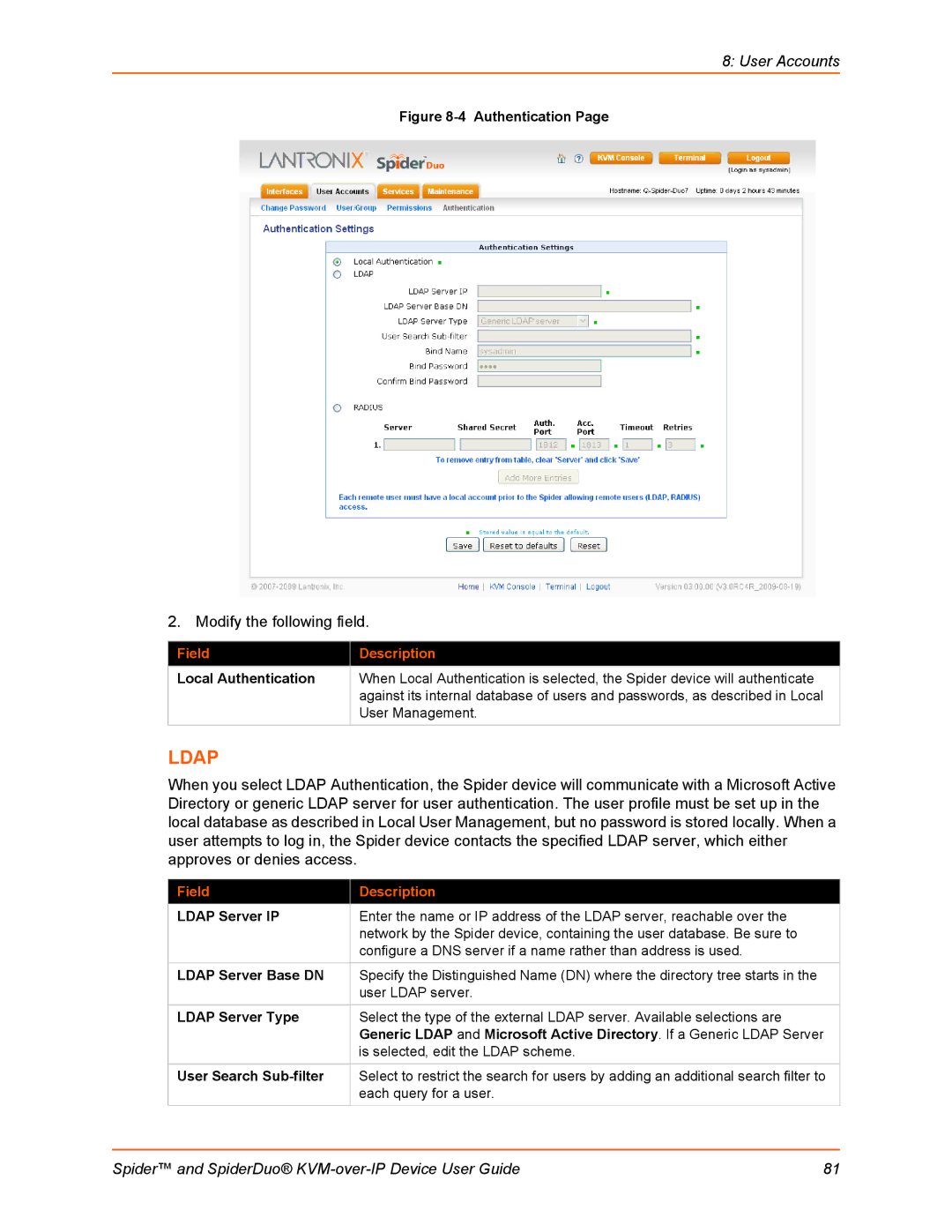
8: User Accounts
Figure 8-4 Authentication Page
2. Modify the following field.
Field | Description |
Local Authentication | When Local Authentication is selected, the Spider device will authenticate |
| against its internal database of users and passwords, as described in Local |
| User Management. |
|
|
LDAP
When you select LDAP Authentication, the Spider device will communicate with a Microsoft Active Directory or generic LDAP server for user authentication. The user profile must be set up in the local database as described in Local User Management, but no password is stored locally. When a user attempts to log in, the Spider device contacts the specified LDAP server, which either approves or denies access.
Field | Description |
LDAP Server IP | Enter the name or IP address of the LDAP server, reachable over the |
| network by the Spider device, containing the user database. Be sure to |
| configure a DNS server if a name rather than address is used. |
|
|
LDAP Server Base DN | Specify the Distinguished Name (DN) where the directory tree starts in the |
| user LDAP server. |
LDAP Server Type | Select the type of the external LDAP server. Available selections are |
| Generic LDAP and Microsoft Active Directory. If a Generic LDAP Server |
| is selected, edit the LDAP scheme. |
User Search | Select to restrict the search for users by adding an additional search filter to |
| each query for a user. |
Spider™ and SpiderDuo® | 81 |
